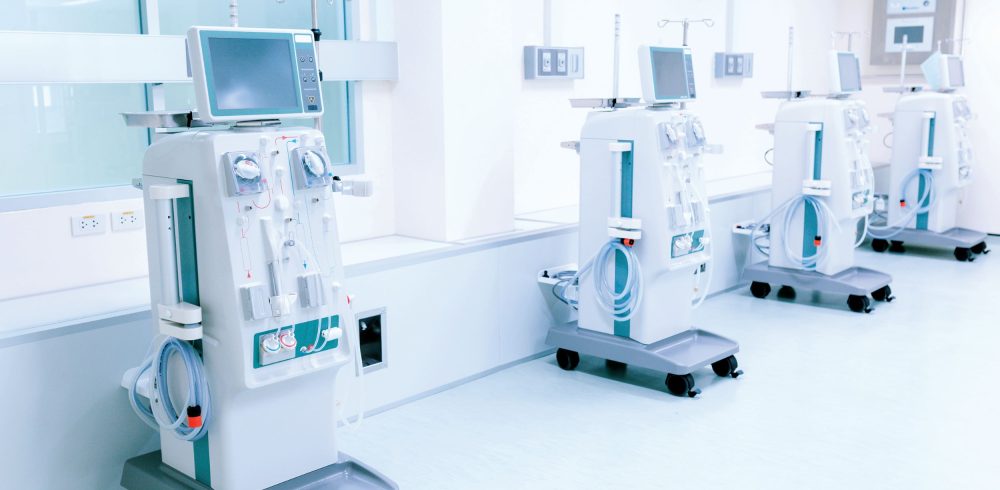Original Equipment Manufacturers (OEMs) are increasingly seeking out sophisticated thermal solutions to improve the performance of medical devices. With over 2 million different medical devices across the global market, according to WHO, the design of these critical devices must be perfect. In this article, Andy Selvy, chief systems designer at industrial heating technology manufacturer Watlow, delves into the transition from traditional heaters to advanced, layered heater technologies in medical device design.
The critical role of thermal management in medical devices
Thermal management within medical devices, clinical diagnostics instruments and analytical instruments involves the sophisticated control of temperatures to prevent overheating and ensure devices operate within their optimal performance range. Proper thermal regulation is vital because even the slightest of deviations can lead to device failure, diminished treatment effectiveness, or serious risks to user safety.
Effective thermal management is crucial for devices that generate significant heat during operation or that use heat as part of therapeutic treatments. Examples include maintaining body-temperature fluids in dialysis machines and regulating the temperature of surgical tools to avoid tissue damage. This precise temperature control is essential for the success of treatments and the safety of patients.
Addressing the challenges
The introduction of sophisticated heating technologies into medical devices brings a set of complex challenges that must be carefully managed. Advanced heating solutions must not only provide effective temperature control but also ensure safety, requiring rigorous testing and adherence to international safety standards such as IEC 60601-1-11. This regulatory standard outlines specific safety requirements for medical electrical equipment.
Achieving high thermal efficiency is essential to prevent overheating, enhance energy efficiency and minimise operational costs. This involves optimising heat transfer capabilities, improving insulation and selecting materials that exhibit excellent thermal properties. Each of these factors plays a critical role in the development of safe and effective medical devices.
Furthermore, the development of cutting-edge thermal solutions can be both complex and costly. Manufacturers must balance these factors with the need to produce affordable medical devices. This balance is crucial to ensure that advanced medical technologies remain accessible to healthcare providers and patients alike. Balancing cost and complexity requires innovative design strategies, efficient manufacturing processes and careful material selection to ensure the final product is both effective and economically viable for the market.
Layered heater technology
The move to advanced heater solutions is motivated by the demand for medical devices that are not only compact and energy-efficient, but reliable and consistent in operation.
Traditional heating solutions have long relied on nichrome element wires embedded within magnesium oxide insulation. These products, such as cartridge and tubular heaters, have been foundational yet come with inherent limitations. They often struggle with heat distribution and temperature stability, leading to energy inefficiency and environmental risks due to high operating temperatures and potential insulation breakdown. They must also operate at lower watt densities leading to larger physical sizes for the same power level.
Layered heater technology marks a significant leap forward, employing meticulously deposited thin layers of heating elements. These layers, often as thin as a fraction of a human hair, are engineered to achieve optimal thermal performance. By stacking layers with precise control, these heaters provide unmatched temperature uniformity and quicker thermal response times, allowing for precise thermal expansion matching, which is crucial for maintaining structural integrity and functional reliability under varying thermal conditions.
The materials used in layered heaters, such as aluminium nitride or other advanced ceramics, play a crucial role in their performance. These materials are selected for their high electrical insulation and superior thermal conductivity, crucial for safe and efficient operations.
Ultimately, layered heater technology not only represents a significant technological advancement but also a paradigm shift in thermal management that is set to redefine standards and expectations within the MedTech industry. The ongoing push for greater efficiency, miniaturisation and safety points to broader adoption of these heaters.
As medical technology continues to advance, the role of sophisticated thermal management systems will remain crucial. Ongoing innovations in heater technologies promise to enhance device performance, improve patient safety, meet the complex demands of next-generation medical devices and facilitate the development of new and effective medical treatments. Looking to the future, the integration of advanced thermal solutions will continue to be a critical area of focus, promising significant impacts on the future of healthcare technology.
Watlow manufactures a range of heating technology solutions for medical devices. To discover them, visit www.watlow.com
Manufacturing & Engineering Magazine | The Home of Manufacturing Industry News















